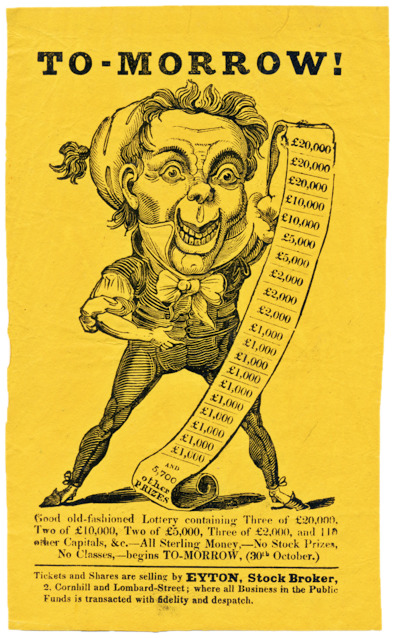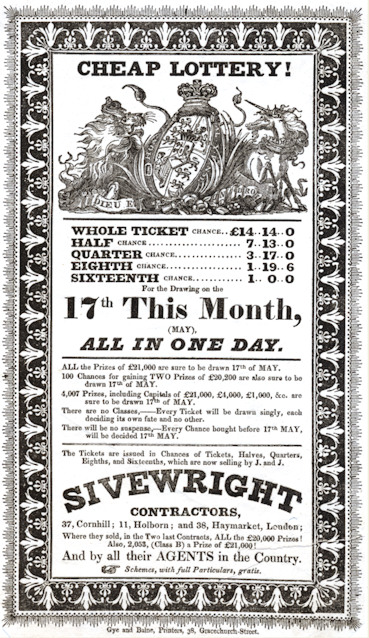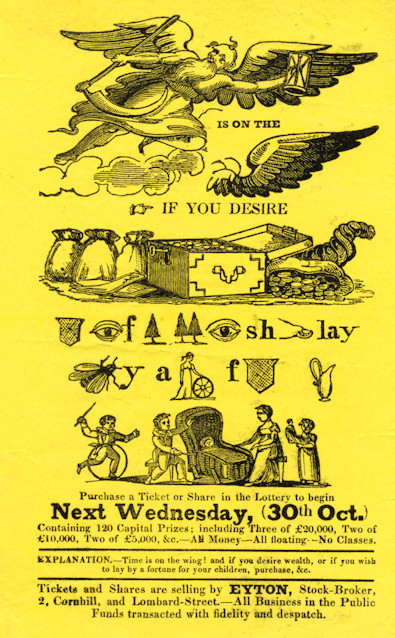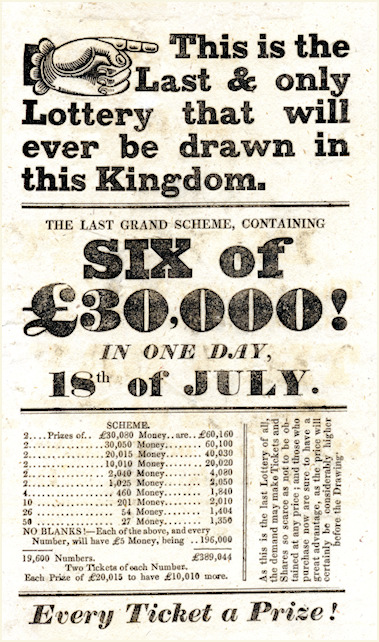 |
|
| News About Us Membership Events Links |
|
English State LotteryThe promotion of lotteries in early 19th-century England, particularly by lottery-office keepers, represents a fascinating chapter in the history of gambling and marketing. During this period, selling and marketing lottery tickets evolved into a sophisticated and highly competitive industry, demanding exceptional ingenuity to captivate the public’s interest. Lottery promoters relied on bold, illustrated handbills and exaggerated advertisements—commonly referred to as lottery puffs—to draw attention. These advertisements often featured inflated claims about the odds of winning or the size of prizes, aiming to entice would-be participants with visions of immense fortune.
To broaden accessibility, lottery offices introduced shares or fractions of tickets, making participation affordable for those unable to purchase a full ticket. This strategy appealed to a wider audience, including members of the working class, offering them a chance to dream of prosperity for a smaller financial outlay.
However, the aggressive marketing of lotteries did not go unchallenged. Critics accused promoters of exploiting the poor, who frequently spent disproportionate portions of their limited incomes on tickets. Moral reformers condemned lotteries as a speculative vice that encouraged reckless behaviour, framing them as a societal ill that preyed on vulnerability and desperation. The growing public and political opposition to lotteries ultimately culminated in their abolition in 1826, ending what has been termed the "Lottery Era." Parliament legislated a ban on all official lotteries, citing their harmful social and economic consequences.
Today, lottery advertising materials are prized by collectors for their historical significance, aesthetic appeal, and distinctive typographical designs. Often printed on inexpensive and fragile paper, surviving examples are rare and highly sought after. These ephemeral artifacts provide unique insights into early 19th-century consumer psychology, visual culture, and societal attitudes toward risk, reward, and the pursuit of fortune.
|
|
|
Home | News | About Us | Membership | Events | Links | Contact | Item of the month | Articles |
| Copyright © The Ephemera Society 2025. All Rights Reserved. |



